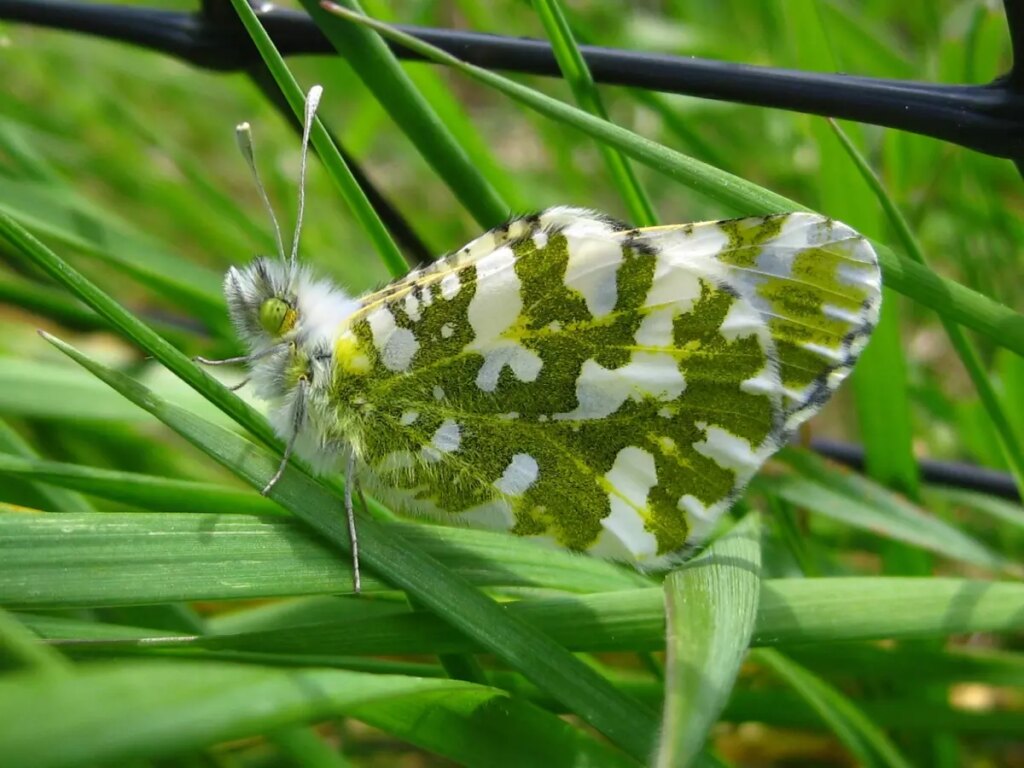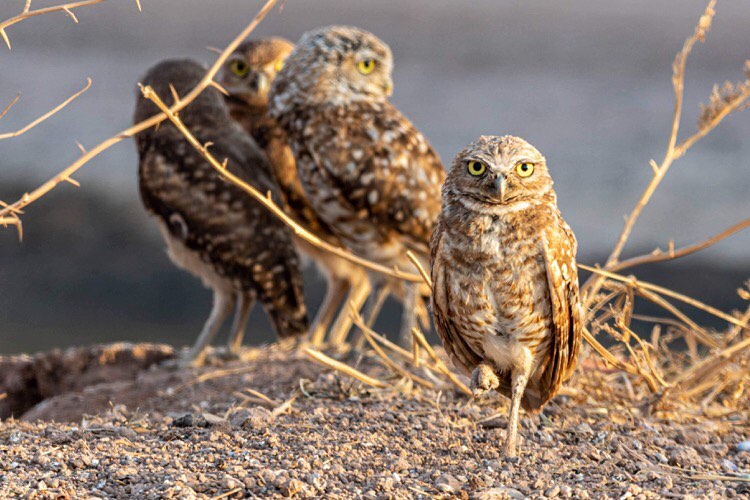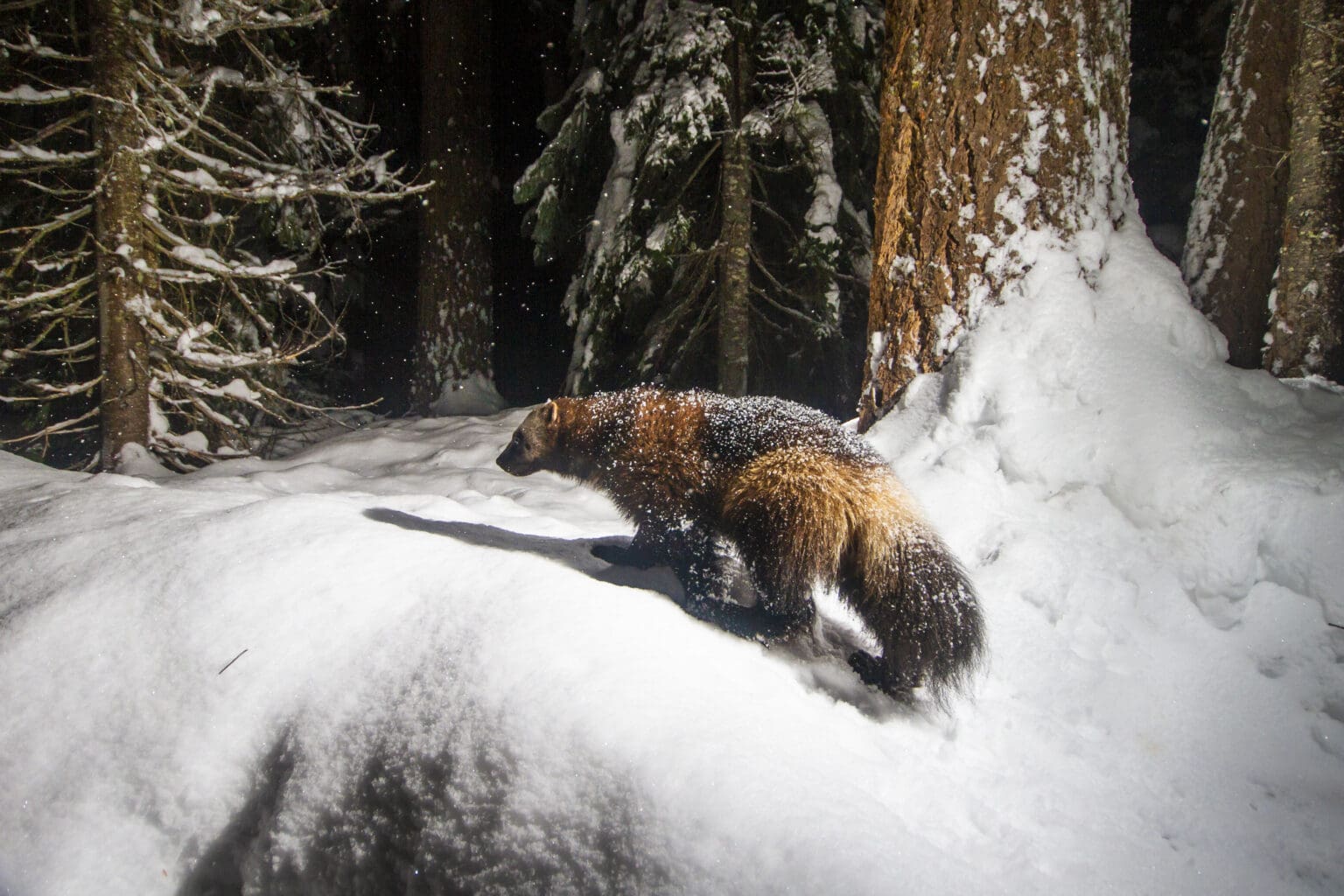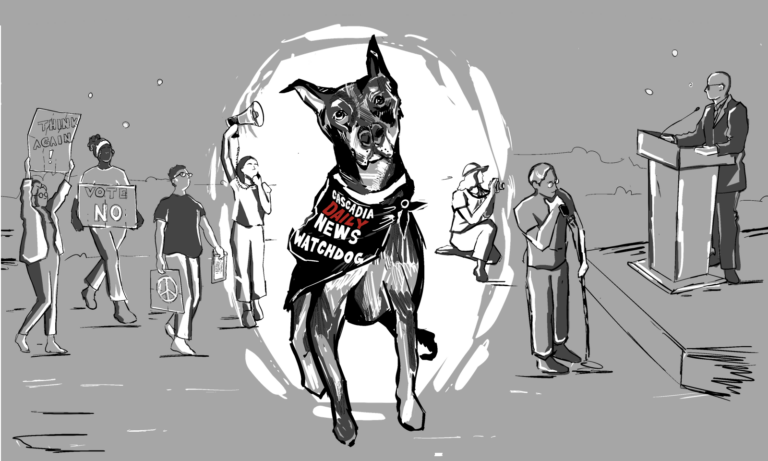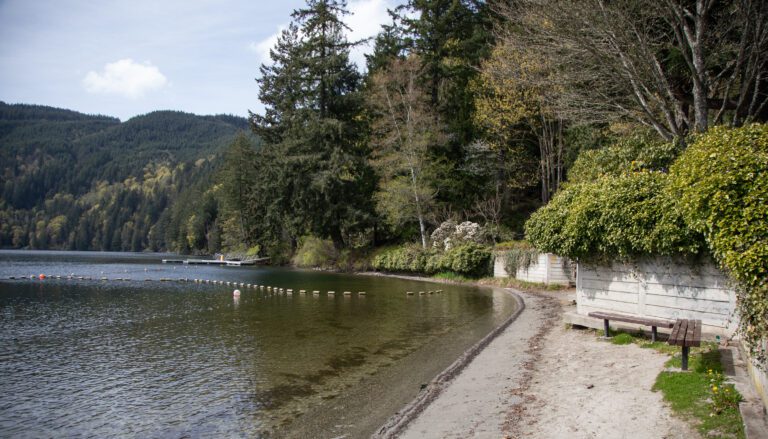Wolverines — highly vulnerable to climate change — are among several species that are up for reclassification as endangered, threatened or sensitive in Washington state.
The Washington Department of Fish and Wildlife (WDFW) is actively seeking information from the public to inform species status reports for wolverine and island marble butterfly, as well as two types of bird: Mount Rainier white-tailed ptarmigan and burrowing owl.
While habitat for the island marble butterfly and burrowing owl does not stretch into Whatcom or Skagit County in any significant way, the wolverine’s range does. These powerfully built mesocarnivores — an animal whose diet consists of 50–70% meat — are known to occupy the Cascades.
“If you’ve got a verifiable detection, as in a video, or a photo of a wolverine, that’s a big deal,” said Jeff Lewis, a mesocarnivore conservation biologist at WDFW. “Every one of those is gold.”
Lewis noted that any uptick in public sightings of wolverines since the pandemic, could most likely be attributed to increased visits to national parks and forests coupled with the widespread availability of smartphones.
“It’s just great, because they’re not easy to see,” Lewis said.
After completing the first step — gathering information from the public — subject-expert biologists will produce a status report describing population, habitat, threats and ongoing management actions. They will include a recommendation to the Fish and Wildlife Commission. Following a public comment period, the commission will make a final decision on the species’ protection status.
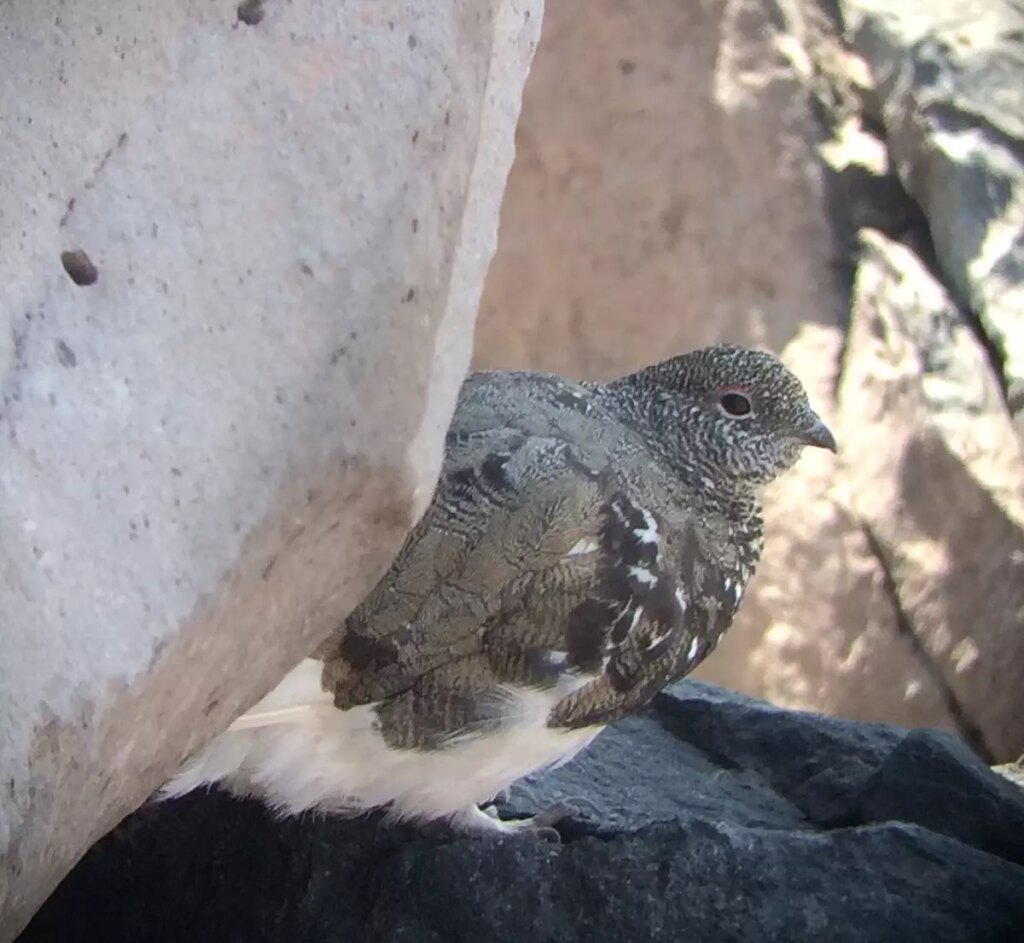
Wolverines aren’t the only species up for reclassification that call Whatcom and Skagit County home. Significant populations of Mount Rainier white-tailed ptarmigan can be found around Mount Baker and into North Cascades National Park. Additionally, there have been confirmed observations of the bird in the high alpine of Skagit County, says Hannah Anderson, the Wildlife Diversity Division Manager at WDFW.
Wolverines, similar to this subspecies of white-tailed ptarmigan, thrive in high-elevation, snow-covered areas. While the feather-footed bird’s habitat is limited to mountaintops, wolverines mostly occupy sub-alpine and higher regions in the southern parts of their western range.
“Climate change could easily be a significant impact to our wolverine population,” Lewis said.
Climate change threatens wolverine habitats by reducing year-round and spring snow cover, impacting their daily needs and suitable denning sites, posing a significant risk to their population. The same warming temperatures pose a threat to the Mount Rainer white-tailed ptarmigan, which are one of the few animals that spend their entire lives on mountaintops, according to U.S. Fish and Wildlife Services.
Washington’s wolverines are the southernmost resident population in the Pacific states. Because of this, compounded by the species’ vulnerabilities to changes in snowpack, wolverines are on WDFW’s radar, Lewis explained.
WDFW’s understanding of the state’s wolverine population is constantly improving, Lewis said. The department has conducted two occupancy surveys in the Cascades that provided much-needed data about where the species is occurring and how much suitable habitat is occupied.
Wolverines, the largest terrestrial species in the weasel family, have one of the largest home ranges of any mammal in North America, from as small as 38 square miles to closer to 386 square miles, Lewis said.
Lewis puts an upper limit of the state’s population at about 50, but noted that a population estimate for these reclusive animals is just an estimate.
“I can only guess on this and guesses tend to come across as legitimate estimates from a government agency,” Lewis said. “I could be wrong.”
While 50 wolverines is not a huge number, best available estimates by U.S. Fish and Wildlife Service put the population in the Western U.S. at about 300.
“States within the habitat range of the wolverine are conducting occupancy surveys at five-year intervals to assess changes in wolverine occupancy in different regions over time,” said Amanda Smith, a public affairs officer, U.S. Fish and Wildlife Service. “These surveys can provide important information on changes in wolverine distribution and likelihood of occurrence, but they do not allow us to estimate population sizes.”
Instead, national wolverine population estimates are made largely based on extrapolations from habitat models, Smith noted.
At the federal level, the stocky animal was added as a threatened species under the Endangered Species Act on Nov. 29. The listing is specifically for the North American wolverine in the contiguous U.S., which excludes populations in Alaska.
The ruling came after a decades-long fight to protect the species.
Under the Endangered Species Act, a species is listed as “threatened” when it is likely to become endangered within the foreseeable future throughout all or a significant portion of its range. This designation is considered a critical step in conservation efforts, as it acknowledges that the species is facing serious threats that could jeopardize its survival if not addressed.
Threatened status triggers a variety of federal protections aimed at preventing the species from declining further. These protections include restrictions on killing, capturing or harming the individuals of the species, as well as conserving and restoring the habitats where they live.
“This long-awaited decision gives the wolverine a fighting chance at survival,” said Timothy Preso, an Earthjustice attorney who represented the Center for Biological Diversity in the long-running legal campaign to protect the species. “There is now hope for this icon of our remaining wilderness.”
The public may submit written comments via email (TandEpubliccom@dfw.wa.gov) or by mailing Washington Department of Fish and Wildlife ATTN: Taylor Cotten, P.O. Box 43141, Olympia, WA 98504.
Further public comment opportunities will be available during the development of each status report.
